Shotgun Shooting
Rough shooting in Northern England
Rough shooting rarely results in large game bags but offers plenty other joys. You never know exactly what you’ll encounter and you get to enjoy a close working relationship with your gundog.
Finding walked up or rough shooting in the UK is quite challenging as most shootable areas are now taken up by driven shoots or smaller syndicates. However, over the years I have been lucky enough to enjoy the sport in some of the most most stunning parts of the country and my most favourite days are when you can hope for a mixed species day.
I recently headed up to the north of England to the Cumbrian Fells, one of the few places where there is the possibility to have the opportunity to shoot grouse, rabbit, pheasant, partridge, snipe, and woodcock. If you are lucky and the weather has been wet and there are a few areas of laying water, there is a chance of a wild mallard or even a teal.
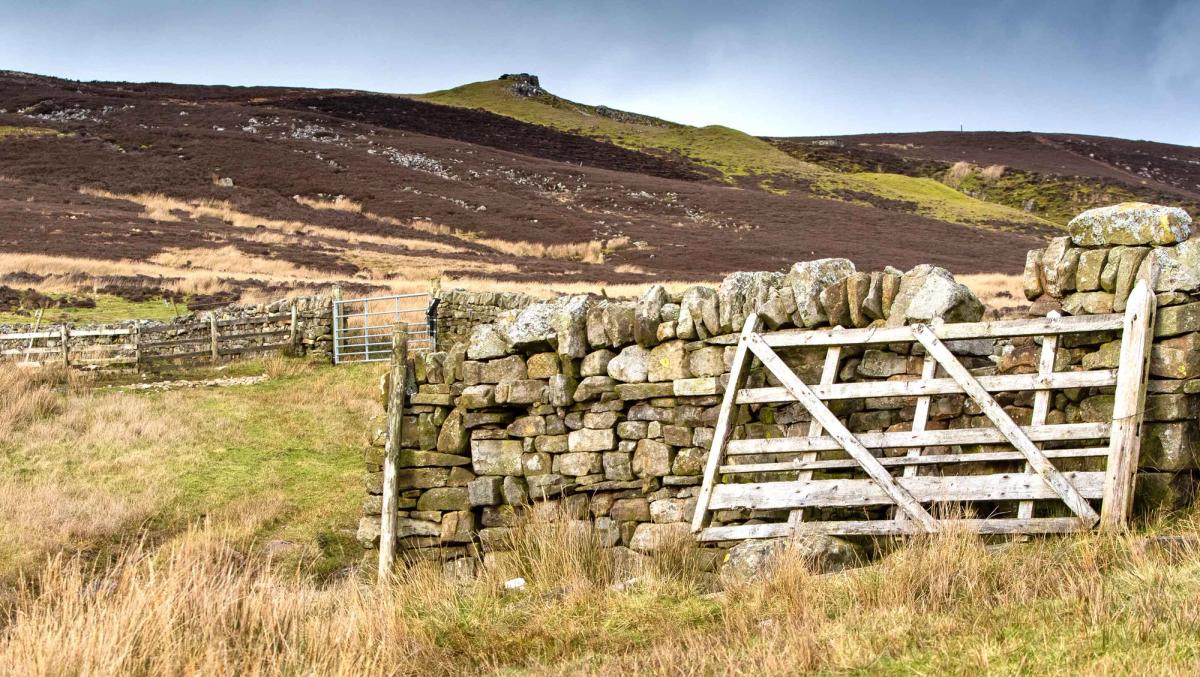
“My shot is pure instinct. I have the smallest of opportunities to pull the trigger.”
//ROUGH SHOOTING IS A CHALLENGE//
As I drive up a long rock-strewn track to the top of the fell, I have plenty of time for the anticipation to build. Unusually, the weather is stunning, it is cold but bright and the sky is as blue as a tropical sea. In fact, conditions are looking perfect.
The true joy of rough shooting is that you never know what quarry is going to leap or fly up in front of you and you must stay concentrated and ready all the time. You must watch your dog to make sure it is steady to the flush; you have to watch your footing in what at times can be difficult terrain. In addition, you have to make sure your shot is going to be safe and you have to do all of this is in a fraction of a second.
A dog that is going to be used to hunt walked up game must work a tight and efficient pattern. If it is one of the spaniel breeds, it should hunt no more than 25 meters to either side of you. There is good reason for this: Imagine a bird or rabbit flushing in front of a dog. If the dog is working any further away from you, the chances are that by the time you get your gun to your shoulder and your brain has told your finger to pull the trigger, your quarry will be out of range.
There is another good reason for training your dog to work a tight pattern: The game is going to be scarce and you don’t want the dog to go past any possible opportunity. Teamwork is vital. You, the handler, will have to use all your field craft to work your dog in likely looking areas of cover and your dog will have use it’s superior scenting ability to route out the quarry.
//FLUSHING A RABBIT//
To have the chance of a mixed bag you will also need to be hunting mixed cover. In the UK, heather is the home of the red grouse and in the north of the country, rabbits are also plentiful. As I click off my cocker spaniel Ted, the sound of curlew and oyster catchers fills the air.
Heather isn’t easy for a dog to hunt – the dog has to learn to dig in underneath the woody stems and not bounce over the top. We haven’t gone more than a couple of hundred meters before the little dog flashes round on some scent and pushes in hard on a clump of thick heather. Almost immediately a fit healthy rabbit bursts out from its sanctuary and heads towards a small gully
My shot is pure instinct. I have the smallest of opportunities to pull the trigger as the rabbit jinks between the granite rocks. My shotgun has double triggers and I don’t need to pull the second one as I see the fleeing bunny roll over to my first shot.
You cannot shoot ground game unless your dog is totally steady. As I look back, Ted has stopped immediately at the point of flush and is looking straight out at the line the rabbit has taken. I give him a quick “get out” command and in no time I have the rabbit delivered back to my waiting hand.
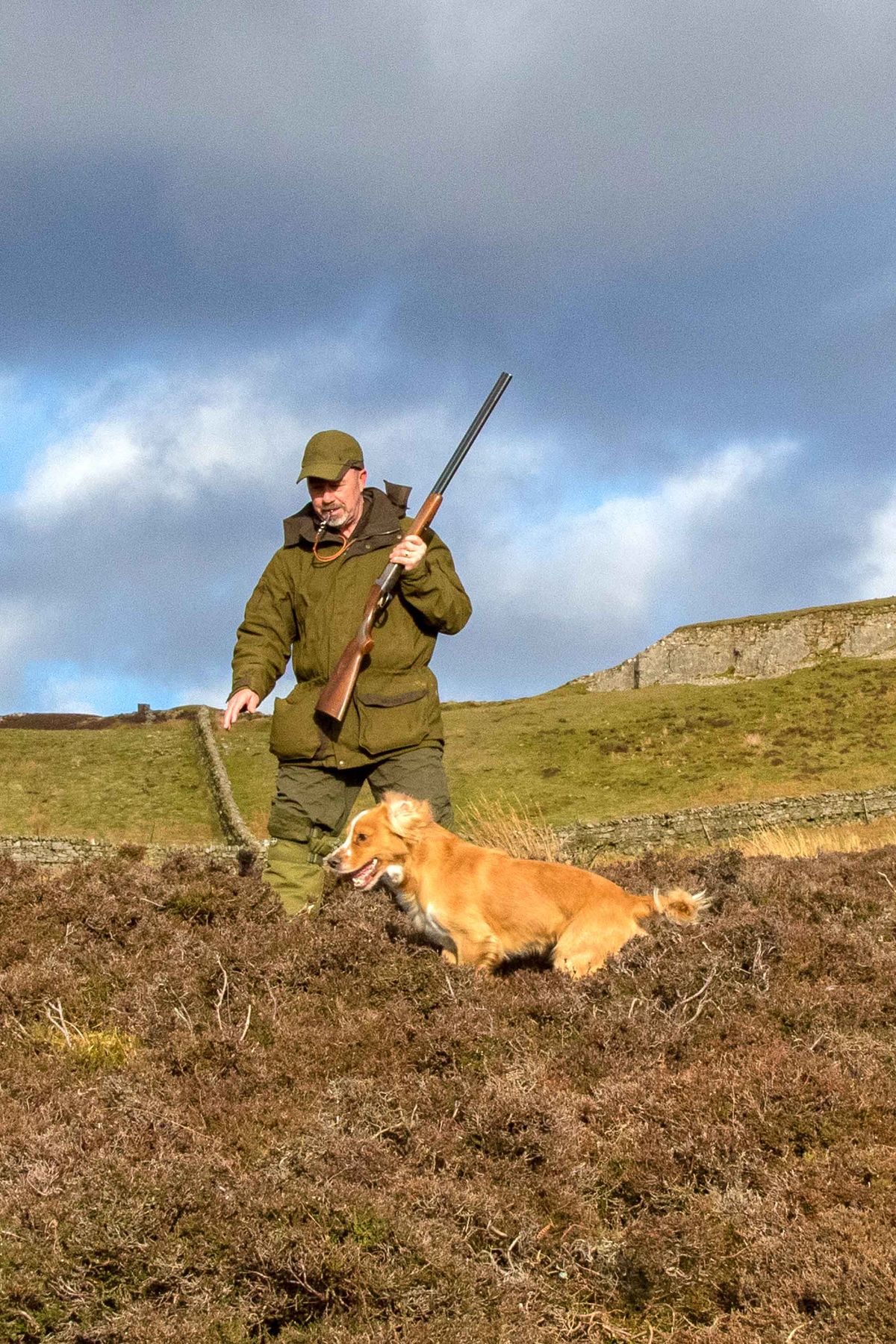
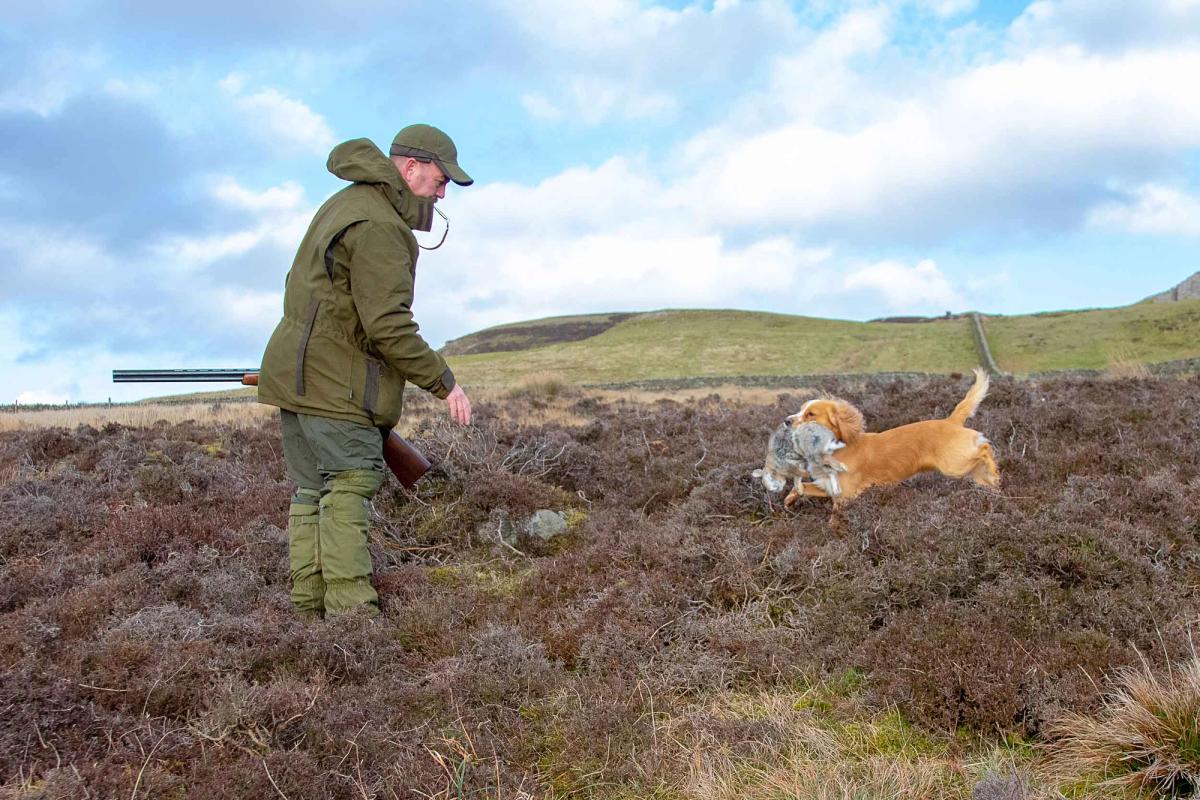
//A TESTING QUARRY//
It is a good start to the day. The moors are dotted with boggy areas that are covered in white grass and rushes. Waders such as woodcock and snipe love such places. A dog like mine was originally bred to hunt and flush woodcock, hence the name “cocker spaniel” and he seems to go up a gear when hunting these damp areas.
Previously I have only ever shot one snipe, although I have shot AT quite a few. They are the most testing target and quite often you only know that they have taken to the wing when they make their alarm call. Then you have got to try and locate them as they zig-zag off into the distance. Woodcock in my humble opinion are the ultimate walked up quarry. They are silent in their flush; they give off little scent and they have a very erratic flight.
Taking a snipe
I am never disheartened by these kinds of situations; I look upon them as a lesson well learnt. We hunt on and soon come to a boggy pool. Immediately I hear the unmistakable alarm call of a snipe. I quickly scan the area and see another little bird lift off the mud. Unbelievably, it falls to my first barrel.
I send Ted for the retrieve and to be honest, he struggles to locate the snipe. They are such small birds and it is well known that not only do they give off very little scent. Some dogs also refuse to pick them up as they supposedly don’t like the taste.
I manage to get the dog into the area that I have marked the bird down and I can see by his body language that he is hitting scent: He keeps feathering out but just can’t seem to locate the bird. After what seems like a lifetime, the little dog just starts to slow down, and I can see that he is trying to home in on an area.
Ted checks and double checks and then he suddenly comes trotting back to me. To be honest, I thought he had given up but as he comes and sit in front of me, I can see he has the tiny snipe in his mouth. I am so pleased. It is proper teamwork and I would never have found the bird without a well-trained dog.
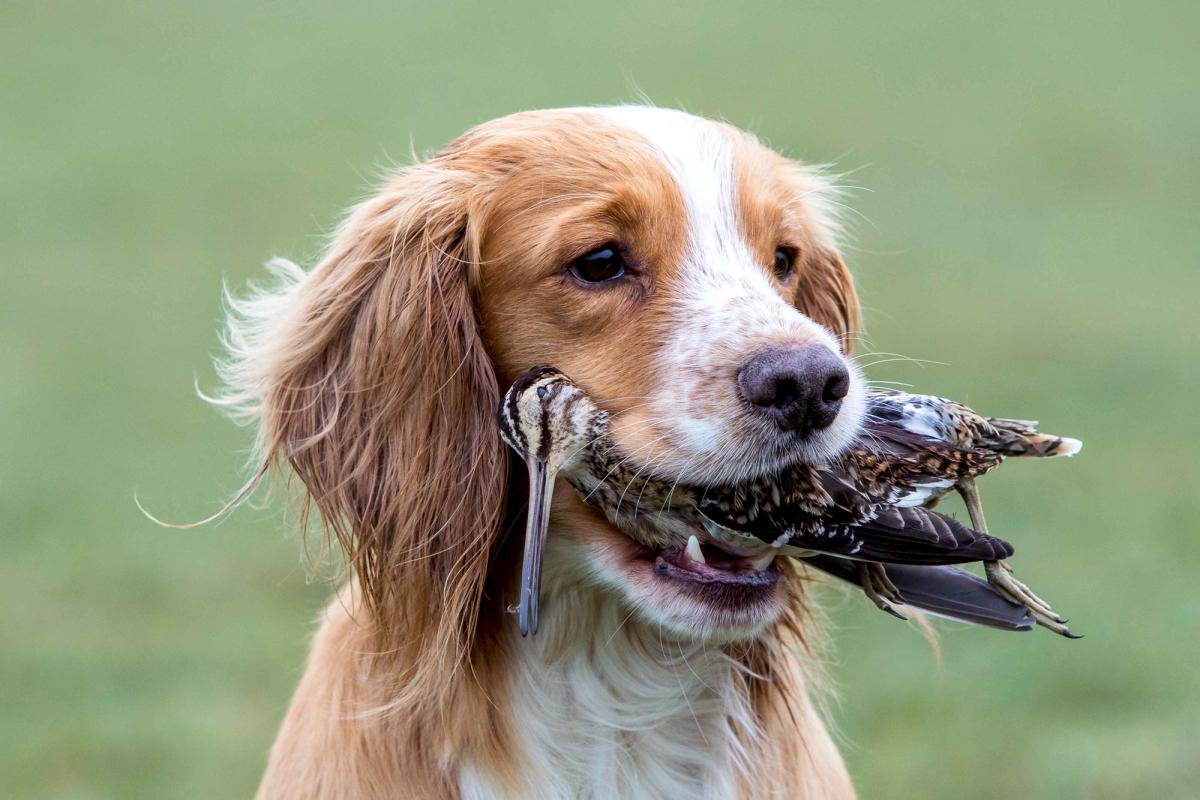
The contact flush
At the edge of the moor there is an old pine plantation. The floor of the wood is covered in laid bracken and it’s the perfect habitat for a pheasant or even a red-legged partridge.
Anyone that regularly hunts pheasants will know that they quite often will rather run than fly. But this is the joy of shooting in this kind of cover: The birds will tuck themselves in and sit tight until a spaniel’s inquisitive nose persuades them to make their escape.
It is important to take your time, let the dog work and try not to miss any bit of likely looking cover. Keep alert for the slightest change in pace or tail action of the dog. All keen dog men and women that hunt their dogs want what is known as a “contact” flush. It is a situation where the quarry is literally pushed out of their sanctuary on the end of the dog’s nose. In my eyes, this is the ultimate when shooting over your dog.
Ted has gotten into a good steady rhythm, working side to side within gunshot range. There is also plenty of stick piles and brashings for him to investigate. As he crashes through one of these, a stunning cock pheasant bursts out. I mount my gun without even thinking about it and sight the fleeing bird over my gun. I instinctively send 28 grams of number 5 shot through the air and the bird crumples and falls to the ground. Ted has a good mark on the bird and quickly makes a clean retrieve.
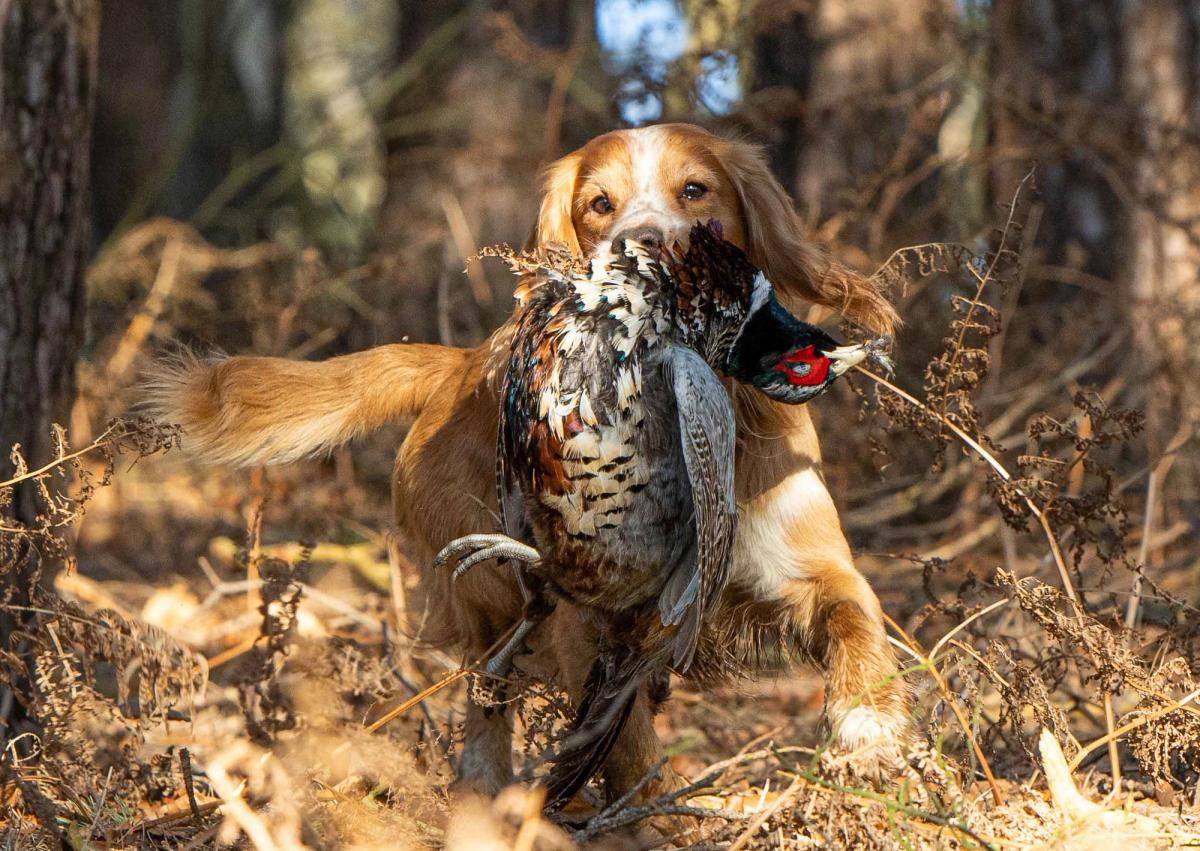
Trust your dog
Over the next hour or so, a couple more pheasants are added to the bag and a fair few are missed. But then just as I reach the edge of the wood, a lone red-legged partridge takes flight. Although it is a long shot, I manage to stop it with my second shot.
It is going to be a difficult retrieve for the dog as he has been unsighted, but I specifically train for these kinds of situations. I am able to handle him out of the wood and into the area I have seen the bird fall in. I can see Ted hit the fall area, but he suddenly takes off at right angles and I know the bird has either moved or possibly even run.
It is at times like this you have to have complete in your dog and its training. There is an old saying in the gundog world: “Trust your dog and let him work it out for himself”. That is exactly what I do. There is nothing more exciting to a handler than watching a dog take a line, and I soon lose sight of the cocker, but I keep quiet and let him get on with his job.
In situations like this time seems to stand still and what may only be a couple of minutes seems like hours. It is easy to start to panic and think about calling your dog back. But Ted is an experienced dog and after what seems like an eternity, I see some movement and he comes running back with the partridge. This situation highlights why I will not shoot without a dog. We owe it to our quarry to be able to quickly locate and retrieve anything that has been shot.
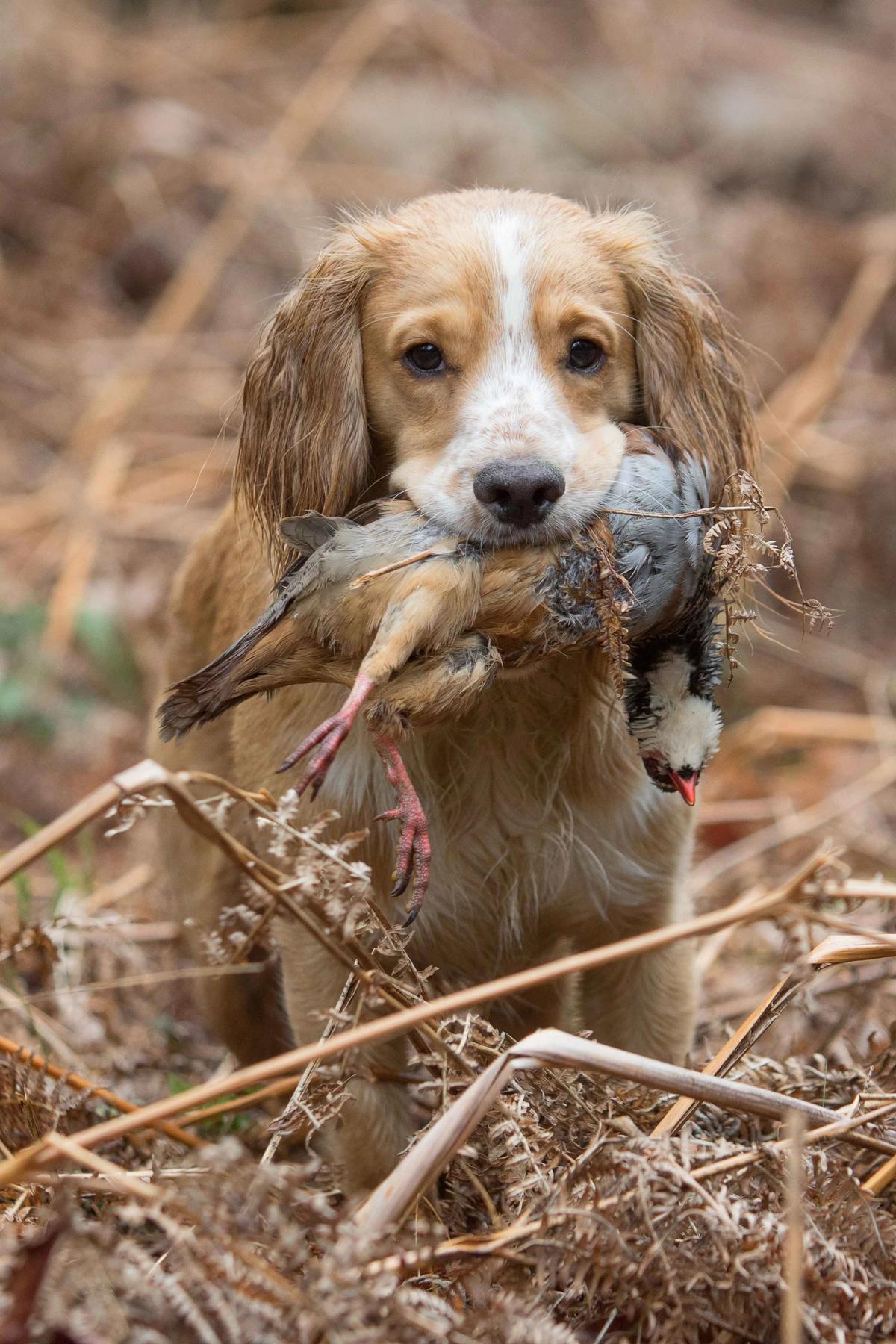
// Written in corporation with Nick Ridley, who is a steady contributor to a handful of British hunting magazines. He is one of Great Britain’s leading gundog photographers and an experienced gundog trainer //